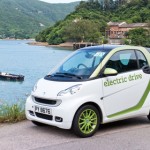Like other large economies, China faces the twin issues of affordable energy and environmental concerns. China accounts for almost half the global coal consumption, has recently overtaken the U.S. as world’s largest oil importer, is the world’s largest automobile market and leads the world in renewable energy installations. All of these create a unique set of problems. A decade ago, Chinese cities had the worst air quality in the world – an unfortunate distinction now held by Indian cities. How China tackled these problems holds important lessons for India as well.
Urban transport: China
The three Chinese cities on the itinerary for a group of scholars who were taken on a visit recently – Beijing, Chengdu, and Kunming – all have extensive subway networks. This has reduced the use of private cars but doesn’t take care of last-mile connectivity. That comes from two-wheelers, which are designed and used very differently from the way Indian consumers do. China’s two-wheelers are almost entirely electric, with lower power than the petrol-powered motorcycles and scooters common in India. They are more like powered cycles. These vehicles don’t have the speed or power to be used on the roads and have been provided with their own lanes, which they share with bicycles.
Beijing, like Singapore, has restrictions on automobile ownership: buying a car requires a permit and not everyone gets it. Since public transport is extensive, people can do without private cars. With fewer vehicles on the roads, pollution has decreased.
These are important learnings for Indian cities, which face congestion and poor air quality simultaneously. Multiple Indian cities are building metro rail projects, but issues of last-mile connectivity remain. NITI Aayog recently proposed the replacement of petrol-powered two-wheelers with electric cycles, but this is a non-starter without special lanes for these low-powered vehicles. The Chinese experience makes clear that India needs an integrated, rather than a piecemeal, approach to the issue of urban congestion and pollution.
A look at India’s energy scenario shows that India will overtake China in imports of crude oil even while coal will remain the largest source of energy, and oil, the second largest source, at around 25% till around 2040. Importantly, 66% of petrol is utilised by two- and three-wheelers while the rest is consumed by four-wheelers. Therefore, policies that enable a shift of two- and three-wheelers to electric power would obviously reduce fossil fuel consumption.
An ongoing debate in India is about whether hybrid electric vehicles (EVs) or battery-based EVs should be prioritised over other kinds of vehicles. Another question is whether India should be going in for investments in hydrogen fuel cell-based applications with zero emissions. All the pros and cons of the emerging new technologies need to be taken into account, including devising policies for the transitionary period.
China and Electric Vehicles
The ‘Made in China 2025’ vision document aims to transform China from the world’s factory to a producer of higher-value goods. New energy vehicles or EVs have been identified as one of the 10 industries where China wants to be a world leader. China is already the world’s largest car market and the Chinese government controls several automotive firms. The clear vision document, coupled with China’s political system and the size of its economy, means that massive resources, financial and otherwise, can be directed towards this goal.
We came across an example of this during our visit to the Sichuan Energy Investment Group (SECI), headquartered in Chengdu. It is an investment and holding company for energy-related investments, owned by the Provincial Government of Sichuan. SECI has investments in hydropower plants, power distribution, shale gas production and natural gas distribution, with a total asset base of RMB 76 billion ($10.9 billion). SECI is the controlling shareholder in the National Innovation Centre of EV Battery, which is a part of the ‘Made in China 2025’ plan. It is also setting up a lithium battery supply chain, including a factory, at a cost of RMB 20 billion. This kind of a massive investment is unheard of in the private sector – such a bet, if it goes wrong, can put the survival of the firm at risk. However, this can be done in China’s state-backed, capitalistic model.
China’s will to facilitate this new technology is also evident from a recent event: electric carmaker, Tesla, in December 2019, delivered to the country the first cars built in its Chinese factory, less than a year after it started work on the plant. Tesla’s Chinese factory is its second facility worldwide. This has significant support from the state. At the street level, the large-scale shift to electric two-wheelers is also state-facilitated. This can make China the global leader in EV and battery technologies.
The uncertainty of renewables
The large-scale installation of renewable energy infrastructure – renewable energy production has tripled in the last five years – has led to China having to tackle the problems inherent in solar/wind power: their intermittent nature. Some industry experts call it junk power, referring to its instability. Large-scale storage remains a problem. Except for hydropower, there is no other way for mega electricity storage. Sichuan, which is rich in hydropower, with over 100 dams, can better manage intermittent energy supply from renewable sources. Northern China, on the other hand, which is a desert without the hydropower option still faces problems of steady supply and balancing its grid.
India has an ambitious target of 100 GW of solar power generation capacity by 2022 – and will face similar issues as supply scales up. The government will do well to study the Chinese experience before committing large investments to renewables.
And finally, the government has to go in for taxation structure and policy support that favour the manufacture of EV batteries indigenously instead of importing such components from China.
Amit Bhandari is Fellow, Energy & Environment Studies Programme, Gateway House.
Brig Vinod Anand is Senior Fellow at Vivekananda International Foundation.
This article was originally published by Vivekananda International Foundation


